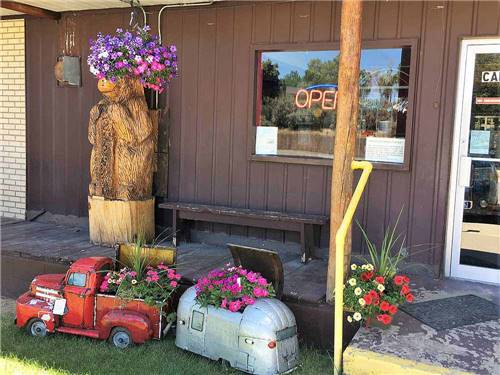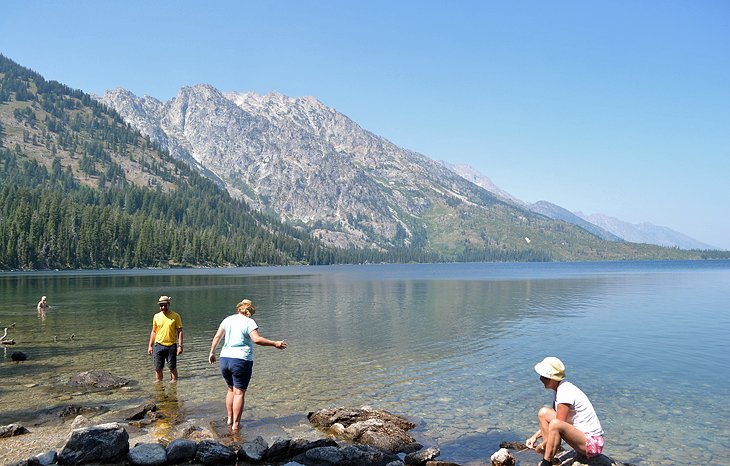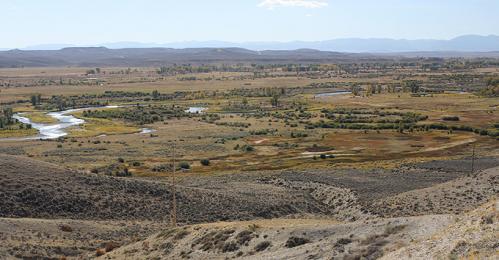

- Places Hook Up In Green River Wyoming Police Department
- Places Hook Up In Green River Wyoming Homes For Sale
River Information
The portion of the Green River shown on this map flows for more than 160 miles from its headwaters at 10,515 feet in the Bridger Wilderness of the Bridger-Teton National Forest to 6,510 feet at Fontenelle Reservoir. The Green continues to flow past Fontenelle Reservoir into Utah where it joins with the Colorado River. The river drains from Peak Lake basin, flows through Stonehammer Lake, and plummets into the Green River Canyon before reaching Green River Lakes. The upper reaches of the Green River have low productivity, or nutrients, but productivity increases in the lower stretches as nutrients flow in from the flood plain and drainages to the west.
The lakes and river provide diverse recreational activities. The river flows for 24 miles from Lower Green River Lake through the Bridger-Teton National Forest. There is a developed campground at Green River Lakes, and dispersed camping is allowed on the Bridger-Teton National Forest. Because of its proximity to the lake, this area is very popular. The river has a low gradient and wide channel as it leaves Lower Green River Lake. Gradient increases about five miles downstream at Moose Creek rapids. Only experienced floaters should attempt this section of the Green River during high flow. During low water years or late in the summer, this section of the river is not floatable except by canoe or float tube. Large rafts and drift boats are not recommended on this section of the Green River. Following Moose Creek rapids, the river eventually mellows to a mostly slow, meandering stream through the National Forest.
The river leaves the Bridger-Teton National Forest and meanders through 17 miles of mostly private land prior to reaching the next public access point at Warren Bridge. The river between the Bridger-Teton National Forest boundary and Warren Bridge access area lacks the boulder-strewn pocket water and instead is mostly wide, flat stretches. The fish cover in this section is limited to deep pools and brush along the banks.
Warren Bridge public access area is on Bureau of Land Management and Wyoming Game and Fish Department lands and provides nearly 11 miles of public access. The river at Warren Bridge access area flows through a glacial moraine, which is typified by large boulders and pocket water, and typically has good fish habitat. Interspersed between these areas are long, flat stretches of poor habitat, which were widened by tie-drives (the use of rivers and streams to transport railroad ties). Historically, the habitat was degraded by tie-drives in the late 1800s and early 1900s. The wide, shallow channels with little bank cover are evidence of the old scars made by the massive tie-drives. Wyoming Game and Fish biologists have completed several projects to improve fish habitat in areas impacted by tie-drives. Work was done on the Upper Green River in the early 1990s and more recently at the Warren Bridge access area.
Warren Bridge to the confluence of the New Fork River is a popular float fishing section. This section of river includes a transitional zone from higher-gradient, smaller river habitat to low-gradient large river habitat. This transition is apparent from Warren to Swains bridges. Within this reach, the substrate decreases in size partially due to passage through glacial moraine. Between the lower boundaries of Warren Bridge access area to the New Fork River confluence, there are approximately 56 miles of stream.
From the New Fork River confluence to Fontenelle Reservoir the habitat is characteristic of large rivers. Habitat conditions vary with some conditions typical of undisturbed systems of this size while others have been degraded by past and current management practices. Tie-drives undoubtedly had some impact all along the Green River.
Riparian Areas
Please use care when launching and retrieving your boat or otherwise recreating in riparian areas. These are the green, vegetated areas along rivers and streams. Riparian habitat makes up less than three percent of the western landscape, yet 80 percent of all vertebrate wildlife species in Wyoming depend on riparian areas during some part of their life. They come for water, forage, and relief from extreme temperatures.
Cottonwood trees, willows, sedges, and rushes dominate most riparian areas throughout Wyoming. Roots for these plants hold the stream banks in place. The plant parts above ground slow and dissipate spring runoff, allowing the excess water to enter into ground water that will be released later during the critical summer and fall period. The vegetation also acts as a shield to protect rivers and streams from temperature extremes. Insects use the vegetation as a food source, and provide an important source of food for fish. Protection of these areas is crucial for maintaining a functioning aquatic ecosystem.
Floating the Green River
Setting off for a boat trip is a fun and exciting adventure, but only if you are prepared for any situation or emergency. Conditions on the river can change rapidly, especially after periods of rain or snowmelt. Be sure you know the flow conditions before you launch. High flow conditions with fast currents can draw a boater into hazards, such as submerged rocks and debris, tree stumps and snags.
Please consider these important steps before your trip:
Find Local Singles For Casual Dating & Hookup in Green River. Are you looking for a hot casual hook up in Green River? Then you've come to the right place! Here you will find dirty sex contacts from your region. Pretty women from Green River who are available for a casual hookup are waiting for your message! Register now for free. From the range’s eastern slopes, the Tongue River drains northeast, through Dayton, Ranchester, and Kleenburn, towards Montana, before it joins up with the Yellowstone River. At 265 miles long, only the upper reaches, within Wyoming, are prime trout fishing waters. Bridger-Teton National Forest. The Green River Lakes Lodge is located 50 miles north of Pinedale, Wyoming. The lodge is available as a rental for day use events such as weddings, family reunions, or meetings for up to 50 guests, or as an overnight rental for smaller groups of up to 12 guests. Hook Up In Green River Wy, speed dating meetup plainview, senior dating in east hampton ny, free dating services in carver massachusetts.
- check weather and flow conditions;
- take maps of your planned route and know the boat launches and access points along the way;
- tell someone where you are going and when you expect to return;
- take clothing to suit the water and weather conditions;
- carry plenty of drinking water and food for your trip, and don't forget polarized sunglasses and sunscreen;
- bring a garbage bag for your trash - leave no trace so others can enjoy the pristine environment; and,
- take a first aid kit, even a cell phone in a watertight bag, along with basic repair tools, an extra paddle and spare parts in the boat.
Fishing the Green River
The Green River supports a diverse fishery. Game fish species found in the Upper Green River include the Colorado River and Snake River cutthroat, brook, brown and rainbow trout as well as kokanee salmon, mountain whitefish and the occasional lake trout. Fly-fishing, spin casting, and bait fishing have proven to be effective methods of catching fish in this river. There are both native and nonnative nongame fish present in the Green River. The most common nongame species are mottled sculpin, mountain sucker, white sucker, speckled dace and redside shiner. The river's less common nongame fish include the native flannelmouth sucker, bluehead sucker, and roundtail chub along with nonnative Utah chub and carp.
A Wyoming fishing license is required to fish in Wyoming. Special regulations apply on specific river reaches, so make sure you know the fishing regulation for the sections of river you will be floating through. Refer to the fishing regulations available through any license selling agent, Wyoming Game and Fish Department offices, or the department's website: https://wgfd.wyo.gov/.
If you plan to catch and release, the following are guidelines we recommend to give fish the greatest chance of survival:


- Use pliers to pinch down barbs on hooks. Fish caught with pinched barbs have a better rate of survival. Use strong line to bring your catch in quickly.
- Land fish carefully and quickly without letting the fish flop on the ground or in the bottom of the boat. Be sure to wet your hands if you need to handle the fish. Dry hands and gloves remove a protective mucous that helps prevent disease in the fish.
- NEVER handle a fish by the gills. It damages the gill filaments and prevents the fish from breathing, leading to death.
- NEVER squeeze the fish.
- Remove hooks gently by using long-nose pliers or hemostats to remove the hook. If the hook cannot be seen, cut the line. If the fish is bleeding from the gills, it is likely to die, and you should keep it as part of your bag limit.
- Revive an exhausted fish by gently cupping your hands around the tail and midsection. Hold the fish in an upright position. Face the fish upstream in fairly calm water and move it slowly back and forth to move water through its gills. Release the fish in gentle current once its gills are working properly and it maintains its balance.
Places Hook Up In Green River Wyoming Police Department


Places Hook Up In Green River Wyoming Homes For Sale
Last Modified: October 17, 2011
